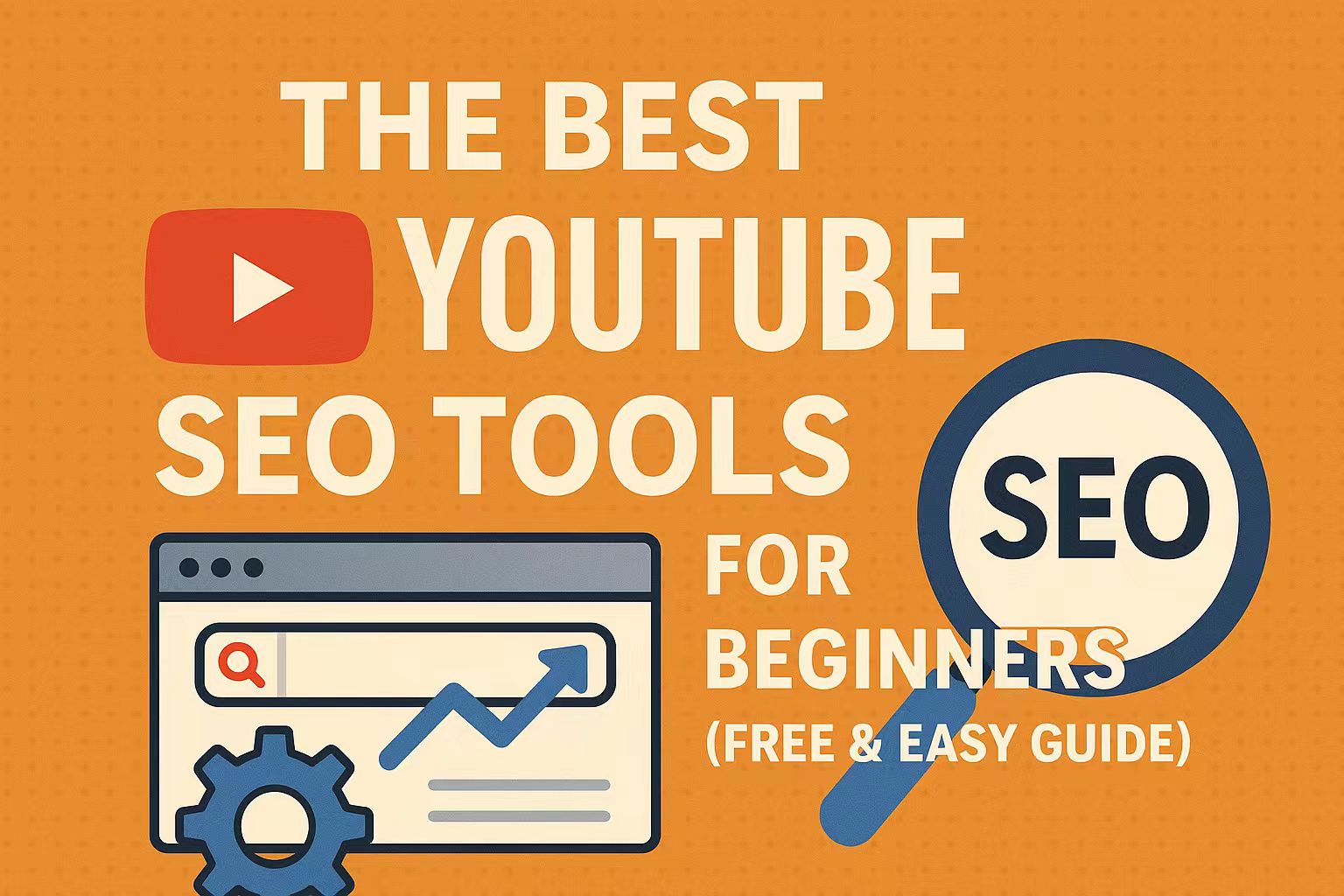Last Updated on September 10, 2025 by Leslie
If you’re just starting your YouTube journey, you’re probably spending hours recording, editing, and uploading videos—hoping someone out there will watch, like, and maybe subscribe. But after a few uploads with only a handful of views, you might start wondering: Why isn’t anyone finding my videos?
That’s where YouTube SEO tools come in.
No, SEO isn’t just for bloggers or big websites. On YouTube, it’s your secret weapon to help the algorithm understand your video, recommend it to the right viewers, and—most importantly—get it seen.
This guide isn’t just a list of tools. It’s written for you, the beginner who’s passionate about making content but may not be sure how to get that content noticed. We’ll walk through what SEO really means on YouTube, the kinds of tools that can help, and how to pick the ones that match where you are now—not where the pros are.
Let’s break it down step by step.
Why YouTube SEO Actually Matters
Let’s clear something up: SEO isn’t some advanced trick that only big channels use. In fact, it’s even more important when you’re small and trying to stand out.
Think about how you use YouTube. You type something in the search bar—maybe “how to fix blurry videos” or “easy pancake recipe”—and you click on a video that sounds helpful and looks clickable. That’s SEO in action.
For creators, SEO helps YouTube understand:
- What your video is about
- Who it’s meant for
- When and how to recommend it
The truth is, YouTube can’t “watch” your video like a human can. It relies on titles, descriptions, tags, thumbnails, and engagement signals to figure things out. That’s why you need tools—to guide you in writing the right title, using strong keywords, and tracking how your videos perform after they go live.
And no, you don’t need to spend money right away. Some of the best SEO tools are completely free. Others can wait until you’re ready to grow faster.
What Does YouTube SEO Really Involve?
Before we talk tools, it helps to know what you’re trying to optimize.
SEO on YouTube isn’t one thing. It’s a combination of small steps that tell the algorithm, “Hey, this video is useful—show it to more people.”
Here are the main parts (don’t worry, we’ll explain them simply):
- Keywords: These are the words people type into search. You need to know what they are so you can include them in your title and description.
- Click-Through Rate (CTR): This is the percentage of people who saw your video and decided to click. A good thumbnail and title make a huge difference here.
- Watch Time & Retention: If people click and then quickly leave, YouTube sees that as a bad sign. But if they stay and watch most of it? That’s gold.
- Engagement: Comments, likes, and shares send signals to YouTube that your content is worth promoting.
- Channel Data: Things like how often you post, whether you’re growing, and what types of content work best.
That’s a lot to manage on your own. That’s why there are tools—some made by YouTube, others by third-party developers—to help you figure it out.
Start with Free YouTube SEO Tools
You don’t need to sign up for ten tools on day one. Let’s start with the basics—things you can use today without paying a cent.
YouTube Studio is your main dashboard. It shows you how each video is performing—views, likes, comments, and most importantly: where the views are coming from. Did people find it through search? Or was it recommended on their homepage? You’ll see all of that inside Studio.
Then there’s the YouTube Search Bar. Yes, the one at the top of the page. Start typing your video topic, and notice what suggestions pop up. That’s YouTube literally telling you what people are searching for. Try typing “how to…” and see what fills in after. These are great ideas for keywords—and even whole video topics.
Need to plan ahead? Use Google Trends (set it to “YouTube Search” mode). It shows you how interest in a topic rises and falls over time. For example, the search for “gift ideas” spikes every November. If you’re a lifestyle creator, you can plan your content around that.
None of these tools require installation. They’re free, reliable, and they form your foundation. If you only use these three, you’re already ahead of most beginners.
The Best SEO Tools for New YouTubers
Once you’ve explored YouTube Studio and Google Trends, you might want more help. That’s where third-party tools come in. They offer features the official tools don’t—like keyword scoring, competitor tracking, and title optimization suggestions.
Here are a few that beginner creators love (and no, you don’t need to use them all at once):
TubeBuddy
TubeBuddy is like having an SEO assistant built right into YouTube. It’s a browser extension that adds extra tools directly to your YouTube dashboard. You can explore keyword ideas, check how competitive a keyword is, get suggestions for YouTube tags, and even test different thumbnails (A/B testing).
Let’s say you’re making a video titled “How to Speak Spanish Fast.” TubeBuddy can help you see if that phrase is overused, and suggest alternatives like “Learn Spanish in 7 Days” or “Quick Spanish Tips for Beginners.”
There’s a free plan that’s already useful. When you’re ready, the paid version adds powerful features like bulk processing and video performance tracking.
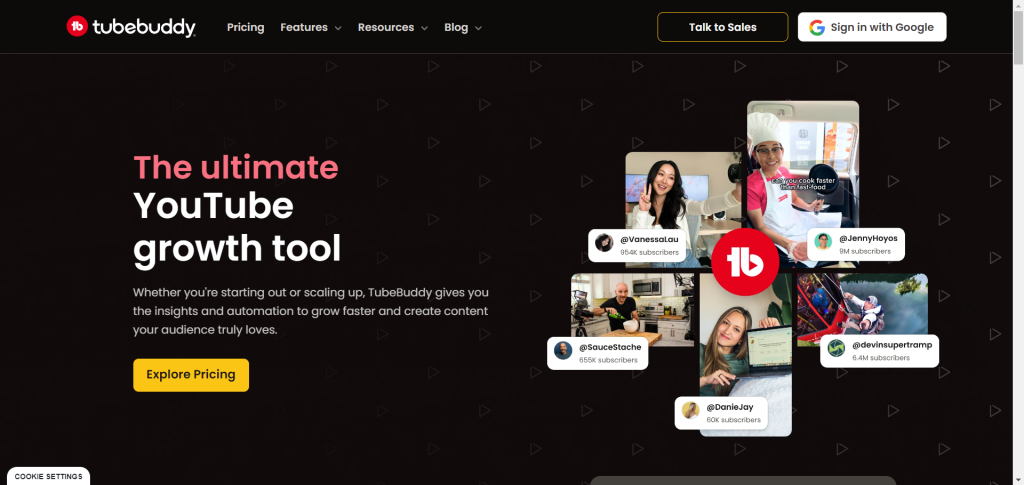
vidIQ
vidIQ is another browser tool like TubeBuddy, but it leans more into analytics. It gives each keyword a score based on volume and competition, which is incredibly helpful when choosing a video topic.
It also shows trending videos in your niche, lets you spy (nicely!) on what tags your competitors are using, and helps you see when your audience is online.
For creators who want to spot trends early and understand what’s working on similar channels, vidIQ is a great ally.
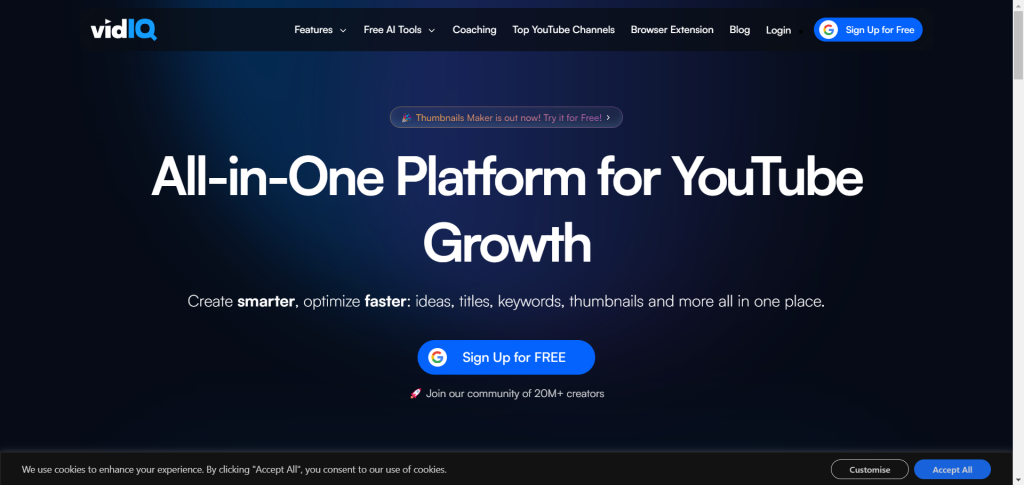
Canva
Now, let’s talk about thumbnails. Even the best title can get ignored if your thumbnail doesn’t grab attention. Canva is a free design tool with templates made specifically for YouTube thumbnails.
You don’t need to be a designer—just choose a template, drop in a photo, add some bold text, and adjust colors. A good thumbnail isn’t just “pretty”—it’s clear, readable, and makes someone curious enough to click.
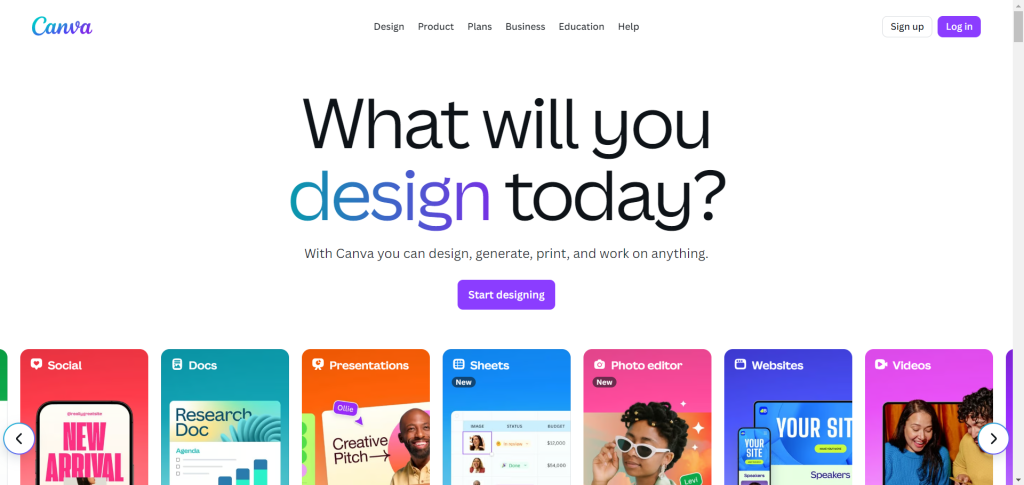
Keywords Everywhere
Keywords Everywhere is a small browser plugin with a big impact. When you search on YouTube or Google, it shows the search volume, cost-per-click, and competition score of any keyword. It’s a great way to understand what your viewers are already searching for.
Let’s say you’re planning to make a video about “face swap apps.” This plugin will show you related keywords like “AI face swap video” or “multiple face swap tools”—some of which you might not have thought of.
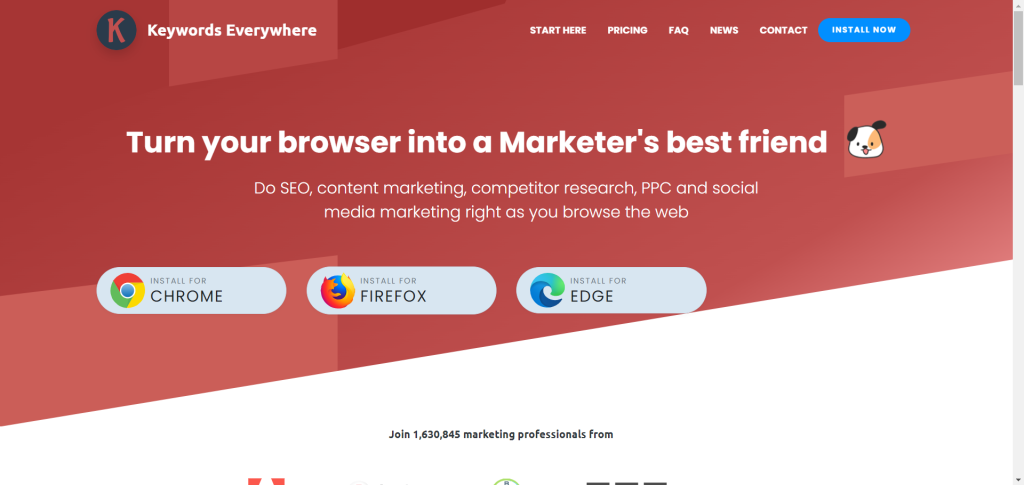
GStory
Once you’ve found the right topic and keywords, the next challenge is actually producing a clean, high-quality video. That’s where GStory comes in. It’s an all-in-one AI toolkit that helps with editing tasks most beginners struggle with—like removing watermarks, enhancing blurry footage, cutting long videos into short-form highlights, adding subtitles in multiple languages, or even translating voiceovers.
Whether you’re posting Shorts, tutorials, or product reviews, GStory saves hours of manual editing with just a few clicks. It’s especially helpful if you want to create multiple versions of the same video for different platforms or audiences—without starting from scratch every time.
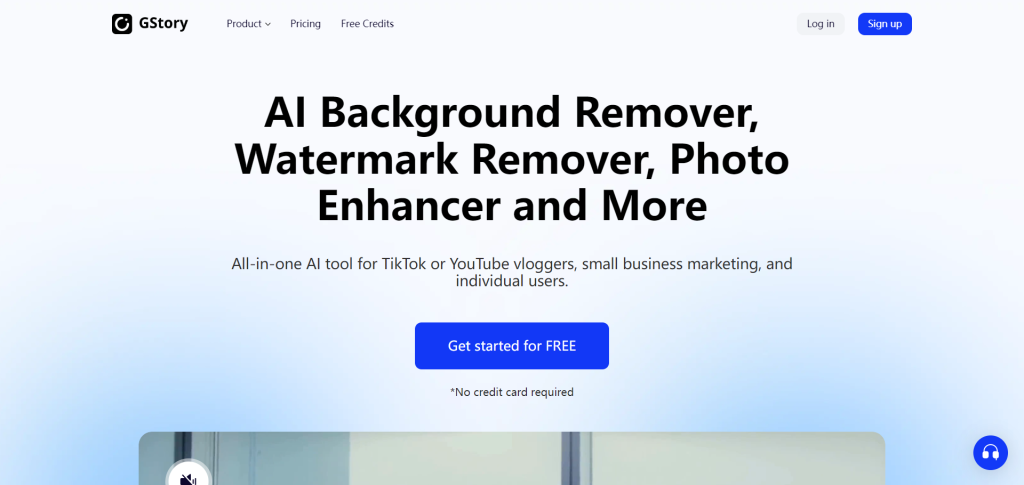
How to Choose the Right Tools Based on Your Channel’s Stage
No two YouTube creators are at the same place. That’s why your toolkit should grow with you—not overwhelm you.
If you’re just starting out (maybe under 10 videos), stick to:
- YouTube Studio for performance tracking
- Search Bar for idea discovery
- Canva for thumbnails
Once you’re posting regularly and trying to grow your audience:
- Try TubeBuddy or vidIQ to research topics, improve SEO, and analyze what’s working
- Use Google Trends to catch seasonal topics early
If your channel is gaining momentum (say, over 500–1000 subscribers), then tools like Social Blade, vidIQ Boost, or even paid plans of TubeBuddy can help scale your workflow and refine your strategy.
And for creators managing longer videos or multiple formats, an all-in-one AI tool like GStorycan help with tasks like video enhancement, subtitle generation, or converting long clips into viral Shorts.
Real-World Tip: Use the Tools, But Watch the Data Too
Let’s walk through a quick example:
Imagine you made a video titled “My Morning Routine.” It got 12 views in 3 days. You might feel discouraged. But before giving up, open YouTube Studio.
You notice people only watch for 40 seconds. You also see that almost no one came from search.
Next time, you try TubeBuddy. It suggests “Productive Morning Routine” as a better keyword. You use that in your title, design a cleaner thumbnail in Canva, and this time—100 views in 2 days, mostly from search.
What changed? The content may have been similar—but SEO helped YouTube actually understand and recommend your video.
Conclusion: Start Simple, Grow Smart
You don’t need to master all the tools at once. You just need to start.
Use the free resources first. Learn what viewers respond to. Then, slowly layer in the tools that help you do more of what works.
SEO isn’t about tricking the algorithm. It’s about helping the right people find the right videos—yours.
As your channel grows, so will your confidence. And so will your reach.
FAQ – YouTube SEO Tools for Beginners
How to learn SEO for YouTube?
Start with YouTube Studio—it’s free and built-in. From there, explore tools like TubeBuddy or vidIQ to understand keywords, rankings, and click-through rates. Many creators also learn by watching SEO tutorials or reading guides (like this one).
Which SEO tool is best for YouTube?
It depends on what you need. TubeBuddy is great for beginners who want simple optimization tips. vidIQ is better if you’re tracking trends and analyzing competitors. Most creators try both before deciding.
How do I start SEO as a beginner?
Begin with what you already have: YouTube Studio and the YouTube search bar. Look at what’s trending, use relevant keywords in your title and description, and create eye-catching thumbnails with tools like Canva.
How to get 100% SEO score on YouTube?
While a perfect SEO score isn’t everything, you can boost it by:
- Using the right keywords
- Writing strong descriptions
- Adding tags
- Customizing thumbnails
- Encouraging comments and engagement
Are paid YouTube SEO tools worth it?
If you’re just starting, free tools are more than enough. But once you’re uploading regularly and growing your channel, paid versions of TubeBuddy or vidIQ can save you time and unlock deeper insights.
Do I really need SEO tools to grow on YouTube?
Not technically—but they help a lot. Think of SEO tools as your compass. They guide your content in the right direction, especially when you’re still trying to figure out what works.
Can I use GStory for YouTube SEO?
While GStory isn’t a keyword research tool, it helps with video editing, subtitles, audio cleanup, translation, and more—making your videos clearer and more engaging, which can indirectly improve retention and SEO.
Can AI Write Descriptions That Rank Better on YouTube?
Yes, many modern AI tools (including some YouTube description generators) are trained to write SEO-optimized descriptions by analyzing keyword trends, metadata, and competitor channels. However, you should always review and tweak the final output to ensure it aligns with your voice and audience.
